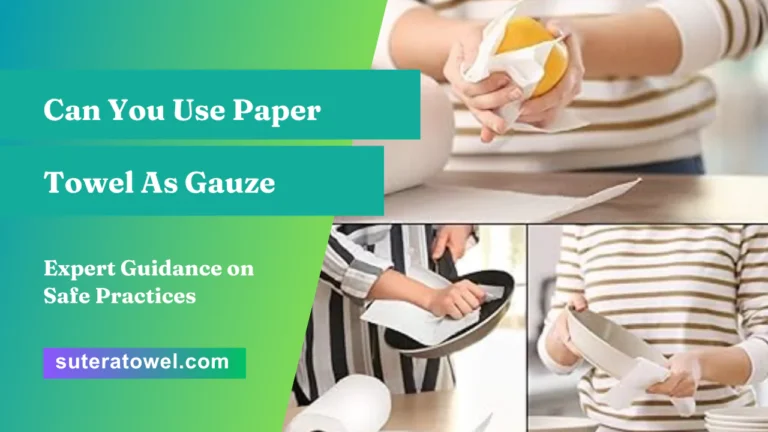Yes, paper towels can be used as a substitute for gauze pads. Paper towels can be a suitable alternative to gauze pads in emergencies or for temporary use if gauze is not readily available.
While they may not be as absorbent or sterile as gauze pads, paper towels can still provide a barrier and help in stopping bleeding or protecting wounds. However, it’s important to note that paper towels may leave behind fibers and could be more irritating or abrasive to the skin compared to gauze.
Therefore, it’s recommended to use paper towels only as a temporary solution until proper medical supplies can be obtained.
- 1 The Difference Between Paper Towel And Gauze
- 2 When To Use Paper Towel Instead Of Gauze?
- 3 The Potential Risks And Limitations Of Using Paper Towel As Gauze
- 4 Alternatives To Gauze For Wound Dressing
- 5 Proper Wound Care And First Aid Techniques
- 6 Conclusion: Considerations For Choosing The Right Wound Dressing
- 7 Frequently Asked Questions For Can You Use Paper Towel As Gauze
- 8 Conclusion
The Difference Between Paper Towel And Gauze
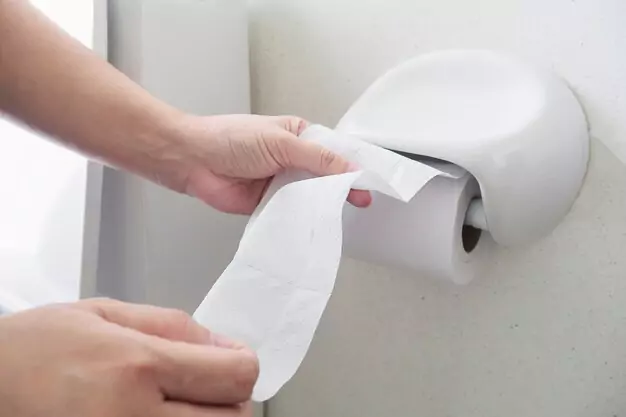
Paper towel and gauze serve different purposes. While paper towel can absorb liquid messes, gauze is specifically designed for wound care and is sterile. Therefore, it is not recommended to use paper towel as a substitute for gauze when it comes to medical applications.
When it comes to wound care, it’s essential to choose the right materials for effective healing. While paper towels and gauze may seem similar at first glance, there are crucial differences between the two. In this section, we will explore the disparities in absorbency and thickness, sterility and hygiene, as well as structure and durability.
Understanding these variations will help you make informed choices when addressing minor injuries.
Absorbency And Thickness
- Paper Towel:
- Highly absorbent, designed to soak up spills and moisture.
- Thickness may vary depending on the brand and quality.
- Typically made of wood pulp or recycled paper fibers.
- Gauze:
- Specifically manufactured for wound care, it offers excellent absorption.
- Available in various thicknesses for different wound types.
- Composed of fine cotton or synthetic fibers.
Sterility And Hygiene
- Paper Towel:
- Generally not sterile, meant for general cleaning purposes.
- May contain chemicals or bleaches that could irritate wounds.
- Less suitable for direct contact with open wounds due to potential contamination risks.
- Gauze:
- Typically sterile, ensuring a clean environment for wound healing.
- Manufactured under controlled conditions to prevent microbial contamination.
- Designed to minimize the risk of infection when used correctly.
Structure And Durability
- Paper Towel:
- Integration of absorbent fibers held together through mechanical bonding.
- Can easily tear or disintegrate when wet or under pressure.
- Lacks the stability required for some wound care applications.
- Gauze:
- Woven or non-woven structure, providing strength and stability.
- Resilient and durable when properly handled.
- Suitable for securing dressings in place or covering larger wounds.
Now that we have explored the disparities in absorbency and thickness, sterility and hygiene, as well as structure and durability, you can better understand the unique characteristics of paper towels and gauze. Making the right choice based on your specific needs can contribute to optimal wound care and healing.
So, next time you encounter a minor injury, remember to choose wisely!
When To Use Paper Towel Instead Of Gauze?
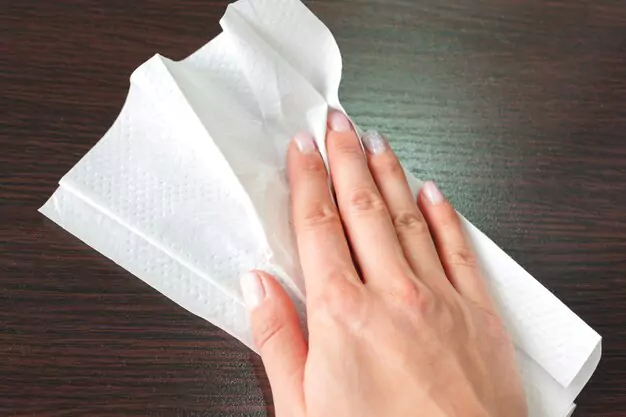
Paper towels can be used as a substitute for gauze in certain situations. They can be helpful when trying to stop bleeding or absorb moisture from a wound. However, it is important to note that paper towels are not sterile and should not be used for deep or serious wounds.
Superficial Wounds and Minor Cuts:
- Paper towels can be used as makeshift gauze for superficial wounds and minor cuts.
- Their absorbent properties make them effective in managing minimal bleeding.
- Note that paper towels are not sterile, so they should only be used in situations where infection risk is low.
- Seek appropriate medical attention for deeper or more severe wounds.
Limited Access to Medical Supplies:
- In situations where medical supplies are not readily available, paper towels can serve as a temporary alternative to gauze.
- Whether you’re in a remote area or facing an emergency, improvising with paper towels can help prevent excessive bleeding.
- Remember to clean the wound thoroughly when access to medical supplies becomes possible.
Emergency Situations:
- During emergencies, immediate action is crucial. Paper towels can be used to control bleeding until professional medical help arrives.
- Apply pressure to the wound with a paper towel to help minimize blood loss.
- It’s important to keep in mind that paper towels are not specifically designed for wound care, and proper medical treatment should be sought as soon as possible.
While paper towels can be used as a temporary substitute for gauze in certain situations, it’s important to note their limitations. They are not sterile and may not provide the same level of protection as gauze. Therefore, it is essential to seek proper medical care as soon as possible to ensure appropriate wound management and prevent complications.
The Potential Risks And Limitations Of Using Paper Towel As Gauze

Using paper towels as gauze might pose potential risks and limitations. While it can absorb blood and other fluids, it lacks the necessary sterile properties of medical gauze, increasing the risk of infection and hindering proper wound healing.
Can You Use Paper Towel As Gauze?
If you’ve run out of gauze and find yourself in need of a makeshift alternative, you may wonder if paper towel can be used as a substitute. While paper towel may seem like a convenient choice, it is essential to consider the potential risks and limitations that come with using them as gauze.
We’ll explore the infection and contamination risks, allergic reactions, and irritation, as well as the ineffectiveness of managing heavy bleeding when using paper towel as gauze.
Infection And Contamination Risks:
- Absorption capacity: Paper towels are not designed to be absorbent like medical gauze. Due to their limited absorbency, they may not be effective in preventing the buildup of fluids, potentially leading to increased infection risks.
- Sterility: Unlike medical gauze, paper towels are not sterile. They may contain bacteria or other contaminants that can introduce infections to wound sites.
- Retention of moisture: Paper towels can retain moisture for longer periods, creating an ideal environment for bacterial growth. This can increase the risk of infection and hinder the healing process.
Allergic Reactions And Irritation:
- Chemicals and dyes: Paper towels may contain chemicals, fragrances, and dyes that can cause allergic reactions and irritation when in contact with the skin. This can further complicate wound healing and delay recovery time.
- Rough texture: Paper towels can have a rougher texture compared to gauze, which can cause further discomfort, irritation, and potential damage to delicate tissues surrounding the wound.
- Adhesive properties: Some paper towels are coated with adhesives or have adhesive residues, which can cause skin irritation and allergic reactions when applied to wounds.
Ineffectiveness In Managing Heavy Bleeding:
- Absorbency limitations: Paper towels typically have lower absorbency compared to gauze, making them ineffective in managing heavy bleeding scenarios. The lack of proper clotting and containment may result in prolonged bleeding and difficulty in achieving hemostasis.
- Shredding or disintegration: When saturated with blood or other fluids, paper towels may shred or disintegrate, losing their structural integrity and leaving debris behind. This can impede the wound-healing process and increase the risk of infection.
- Compression and pressure application: Paper towels lack the specialized design and properties necessary to apply uniform pressure and compression to manage bleeding effectively.
While paper towel may seem like a quick fix, it’s important to understand the potential risks and limitations when considering it as a substitute for gauze. To ensure the best care for your wounds, it is recommended to use proper medical gauze that is designed for wound management.
Alternatives To Gauze For Wound Dressing
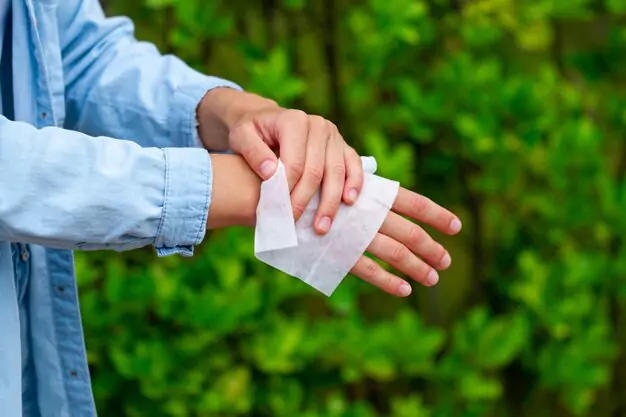
Explore the alternatives to traditional gauze for wound dressing. Discover whether paper towels can be used as a substitute for gauze in wound care.
When it comes to wound dressing, gauze is often the go-to choice. However, there are other alternatives available that can be just as effective. We will explore three alternatives to gauze for wound dressing: Sterile Dressings and Bandages, Hydrogel Dressings, and Tissue Adhesive and Liquid Bandages.
Sterile Dressings And Bandages:
- Sterile dressings and bandages are commonly used to cover wounds and promote healing.
- These dressings provide a protective barrier against bacteria and other contaminants.
- They are available in various sizes and shapes to accommodate different types of wounds.
- Sterile dressings and bandages are typically made from materials such as foam, film, or non-woven fabric.
- They can be easily applied and secured with adhesive tape or self-adhesive strips.
Hydrogel Dressings:
- Hydrogel dressings are a type of semi-transparent gel-like dressing that helps maintain a moist wound environment.
- These dressings are made up of water or glycerin-based gels and help promote wound healing.
- They provide a cooling and soothing effect, relieving pain and discomfort associated with wounds.
- Hydrogel dressings are particularly beneficial for burns, blisters, and dry or necrotic wounds.
- They can be easily applied and do not require frequent dressing changes.
Tissue Adhesive And Liquid Bandages:
- Tissue adhesive and liquid bandages are excellent alternatives for minor cuts and wounds.
- These products create a thin, flexible, and waterproof barrier over the wound, protecting it from dirt and bacteria.
- Tissue adhesive is applied to the wound edges, sealing them together, while liquid bandages are brush-on or spray-on formulations.
- Both options provide a secure and protective covering, allowing the wound to heal naturally.
- Tissue adhesive and liquid bandages are particularly useful in areas where traditional bandages may not adhere properly.
Gauze is not the only option for wound dressing. Sterile dressings and bandages, hydrogel dressings, and tissue adhesive and liquid bandages offer viable alternatives. Consider the specific needs of the wound and consult with a healthcare professional to determine the most suitable option.
Remember, proper wound care is essential for promoting healing and preventing infection.
Proper Wound Care And First Aid Techniques
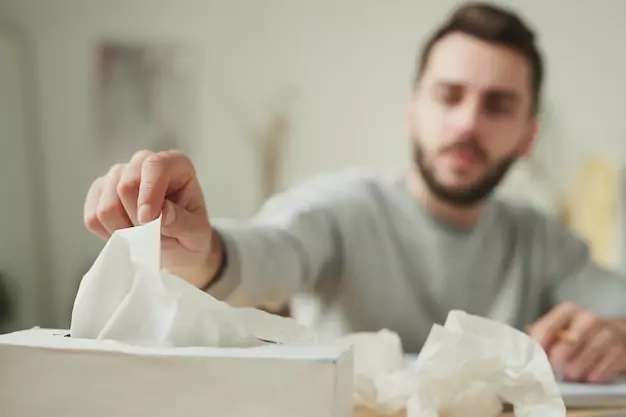
Paper towels should not be used as a substitute for gauze in wound care and first aid techniques. Gauze is specifically designed to absorb fluids and provide a sterile environment, which is essential for proper wound healing.
When it comes to taking care of wounds, using the right techniques can make all the difference in the healing process. Whether it’s a minor scrape or a deeper cut, following proper wound care steps can help prevent infection and promote faster healing.
In this section, we will discuss three key aspects of wound care: Cleaning the Wound, Applying Antiseptic or Antibiotic Ointment, and Securing the Dressing Properly.
Cleaning The Wound:
- Gently rinse the wound with clean, lukewarm water to remove any dirt, debris, or bacteria.
- Pat the area dry with a clean paper towel, avoiding any rubbing which can irritate the wound.
- Avoid using alcohol or hydrogen peroxide, as these can delay the healing process by damaging healthy tissue.
Applying Antiseptic Or Antibiotic Ointment:
- After cleaning the wound, apply a thin layer of antiseptic or antibiotic ointment to help prevent infection.
- Make sure to use a clean cotton pad or sterile gauze to apply the ointment, avoiding direct contact with your fingers.
- Cover the wound with a suitable dressing, such as sterile gauze or a clean, non-stick pad.
Securing The Dressing Properly:
- Use adhesive tape or a bandage to secure the dressing in place, ensuring it is snug but not too tight.
- Check the dressing regularly for any signs of infection or excessive bleeding.
- Change the dressing as needed, typically every 24 to 48 hours, or if it becomes wet, dirty, or loosened.
Remember that proper wound care goes beyond just using paper towels or gauze. Seek professional medical attention for deep, jagged, or heavily bleeding wounds, as well as for signs of infection such as redness, swelling, or pus. By following these wound care techniques, you can contribute to a quicker and safer healing process.
Conclusion: Considerations For Choosing The Right Wound Dressing
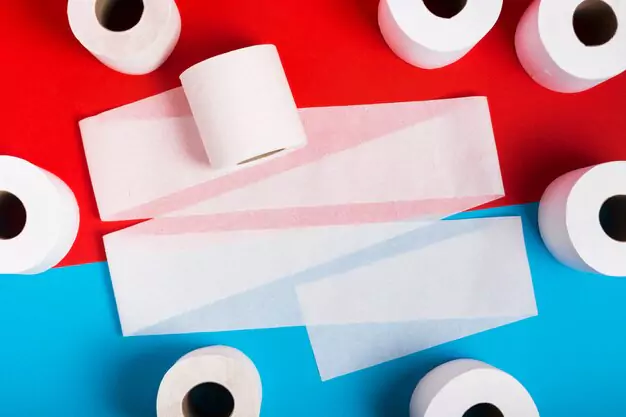
Considerations for choosing the right wound dressing should include the use of appropriate materials such as gauze instead of paper towel. Gauze provides better absorption, breathability, and protection, promoting faster wound healing and reducing the risk of infection.
Understanding The Nature Of The Injury
- Before deciding whether to use paper towel as gauze, it’s important to understand the nature of the injury. Here are a few factors to consider:
- Size and severity of the wound: Paper towel may be suitable for small, minor cuts and scrapes, but for larger or more serious wounds, it is best to consult a healthcare professional.
- Bleeding: If the wound is actively bleeding, paper towel may not provide adequate absorption and proper wound care.
- Risk of infection: Some wounds are more prone to infection, and using paper towel as a dressing may not offer the necessary barrier to bacteria.
Availability Of Medical Supplies
- In certain situations, you may be faced with limited access to proper medical supplies. Here are a few considerations:
- Emergencies: If you don’t have gauze readily available and you need to stop bleeding quickly, improvising with a clean paper towel could be a temporary solution until proper medical care is accessible.
- Remote locations: In remote or outdoor settings where immediate medical attention is not available, using a paper towel can help provide a temporary cover until professional help can be reached.
- Resource constraints: If you can’t obtain medical supplies due to financial or logistical constraints, using a clean and sterile paper towel can be an alternative in certain cases.
Consulting A Healthcare Professional
- While paper towels may serve as a makeshift option in some instances, it is always advisable to consult a healthcare professional for proper wound management. Here’s why:
- Accurate assessment: Only a healthcare professional can accurately assess the wound and determine the appropriate dressing based on its type, size, depth, and location.
- Infection prevention: Healthcare professionals can provide advice on preventing infection and offer appropriate treatments that paper towel alone cannot provide.
- Timely healing: A healthcare professional can ensure proper wound care, promote faster healing, and minimize the risk of complications.
Remember, choosing the right wound dressing is crucial for proper wound care and healing. While paper towels may have their uses in certain situations, it is important to prioritize seeking professional medical advice whenever possible to ensure the best outcome for your injury.
Frequently Asked Questions For Can You Use Paper Towel As Gauze
Can Paper Towels Replace Gauze?
No, paper towels cannot replace gauze for medical purposes. Gauze is specifically designed for wound care.
What Can I Use If I Don’t Have Gauze?
If you don’t have gauze, you can use alternatives such as a clean cloth, paper towel, or a clean sock.
Can I Put a Paper Towel On A Wound?
No, it is not recommended to put a paper towel on a wound.
Can You Use Paper Towels To Stop Bleeding?
Yes, paper towels can be used to stop bleeding.
Conclusion
Overall, using paper towel as gauze can be a convenient alternative in certain situations. It offers absorbency and can help control bleeding. However, it is important to understand the limitations of paper towel when it comes to wound care. Paper towel is not sterile, which increases the risk of infection.
Additionally, it may leave behind fibers or residue on the wound, further complicating the healing process. It is always advisable to use medical-grade gauze, which is designed specifically for wound care. If paper towel is used as a temporary solution, it is crucial to monitor the wound closely for any signs of infection or worsening symptoms.
Ultimately, consulting a healthcare professional is the best course of action to ensure proper wound care and reduce the risk of complications.
